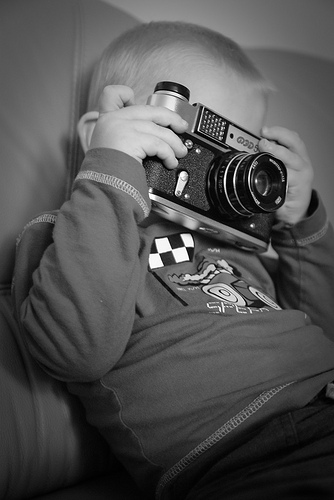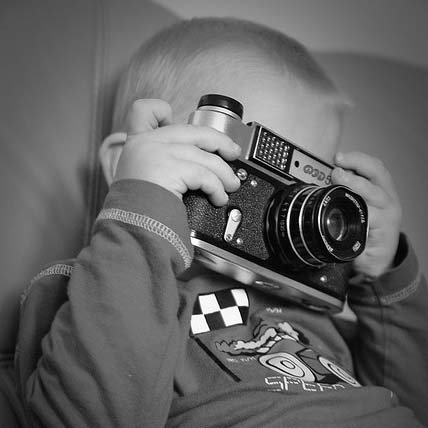Learn this professional photographers’ secret to help you capture the shots you’d otherwise miss.

I was lucky … I learned photography as an apprentice to a multi-award winning professional photographer. Most of the things I learned I don’t remember learning. They are natural to me now and I don’t even think about them.
One of my earliest lessons was on how to hold a camera. This included where and how to grip the camera for maximum stability; how to balance the camera so holding it became relatively effortless; and how to lock my forearms to my chest to keep the camera steady.
How to Hold a Camera – The Eyes Have It!
It’s normal to see beginner photographers close one eye as they put the other up towards their camera’s eyepiece. This feels natural as closing the eye you’re not using to view your image stops you being distracted by other things around you and helps you focus on the composition.
The problem is that if you’re shooting for any period of time, keeping one eye closed becomes quite tiring. It also means that you’re unaware of anything else around you – meaning:
- you could miss a great shot;
- fail to spot a hazard; or,
- miss out on direction from your client.
Imagine if something were moving in towards your frame but you didn’t see it due to you seeing only what’s shown to you by the viewfinder. You wouldn’t be able to accurately predict the correct time to press the shutter release. In the days of film, it would also have been expensive to waste a shot due to somebody or something entering the frame just as you took the photo.
Which Eye Should You Look Through the Viewfinder With?
One of your eyes will be dominant over the other. That means that you will be able to concentrate on the image you see through your dominant eye while choosing to ignore (or not) the image you see through the other eye. Being aware of what’s happening through your non-dominant eye without it distracting you is a very useful skill to develop for the reasons described above.
You may already know which of your eyes is your dominant one: if you fire a handgun, your dominant eye is the one that you naturally use to align the iron sight with your target.
Your dominant eye is not necessarily on the same side of your body as your strongest (or dominant) arm.
If you don’t know which of your eyes is your dominant one, try this simple test:
An Easy Test for Eye Dominance
One way to work out which is your dominant eye is to perform this exercise:
- With both eyes open, stretch an arm out and, using your index finger, point at something that’s at least two arm lengths away. While you do this you’ll be aware that you can see two index fingers as each eye will feed a slightly different view to your brain. Ignore this and just line up your finger with the object in a way that just feels right to you.
- Key your arm still and stay focused on the object. Now close one eye. Open it again. Then close the other eye. Do this two or three times and, while you remain focused on the far away object, notice which eye you have open when your index finger is perfectly aligned with the object.
- This is your dominant eye.
If that didn’t work, another way to check for this is by looking through the camera. Look through the eye piece with your usual eye but keep both eyes open. Now try using the other eye – again keeping them both open.
When you’re using your dominant eye you will be able to concentrate on your subject through the viewfinder while also being aware of things outside of the frame through your non-dominant eye.
It may feel slightly uncomfortable at first but with a little practice there will come a time when you can keep both eyes open while looking through the eyepiece, concentrate on holding the camera, and being aware of your surroundings all at the same time.
